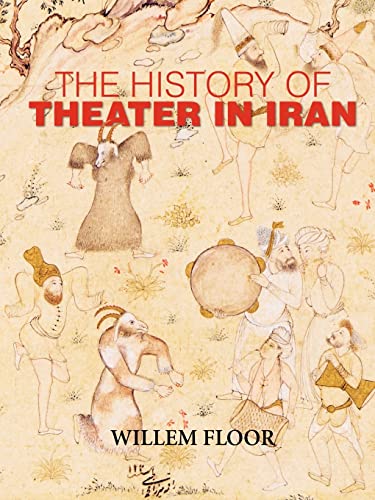The History of Theater in Iran
Floor, Willem M.
About the Book
Description:
Former library book; may include library markings. Used book that is in clean, average condition without any missing pages. Seller Inventory # GRP89599629
About this title:
Synopsis: Although most people do not speak of theater and Iran in the same breath, dramatic expression has always been a fixture of Iranian culture. Some 2500 years ago, kings and commoners alike were regaled by comic theater in the form of dance and mime, accompanied by music. The dancers often wore masks, a vestige of an earlier era when such dances were enacted as religious rites. Comic drama also took a slapstick form, in which social situations were lampooned and people ridiculed by imitating their accents and behavior. Yet another ancient dramatic art was that of puppetry, now known to have exist much earlier than its attested date of about 1000 CE. Only glove and string puppets were popular in Iran; though briefly practiced, shadow puppetry failed to win a following. Like comic dance and mime, narrative drama originated in religious rites. Over time, religious ceremony evolved gave rise to a popular secular epic tradition that was very popular in pre-Islamic Iran. The bard enjoyed an important place in social life, and the verbal arts of poetry, storytelling, elegy and recitation thrived, often accompanied by music. In Islamic times, this art form continued and was given impetus by elegies and public recitations about the heroic deeds of ancient kings. In addition, Iran produced the only form of Islamic religious epic drama (ta`ziyeh-khvani), which reenacts the martyrdom of Imam Hoseyn. In traditional Iranian theater, there was no real difference between high and low culture, although artists attached to the royal court and sponsored by the rich tended to be more competent than those who performed for the public at large. With the exception of religious and narrative drama, written texts were seldom used. The artists—whether comedian, mime, puppeteer, elegist or storyteller performed both in public and private spaces. European theater, with its reliance on a written text and normative rather than improvisatory acting, arrived in 1878 and was part of the modernization process in Iran. It enjoyed a hey-day in the early years of the twentieth century, but has experienced many ups-and-downs since then. Today, it once again enjoys great popularity. At the same time, traditional theatre is being rediscovered, and playwrights are using some of its forms to develop indigenous modern Iranian theatre—a melding of the deep past and dynamic present. Cover painting: A mime dance by a group of professional entertainers accompanied by musicians, ascribed to Mirza Mohammad al-Hoseyni, Iran 1613. Courtesy of Freer Gallery of Art, Smithsonian Institution.
About the Author: WILLEM FLOOR studied development economics, nonwestern sociology, as well as Persian, Arabic, and Islamology from 1963-1967 at the University of Utrecht (the Netherlands). He received his doctoral degree from the University of Leiden in 1971. Since 1983, Dr. Floor has been employed by the World Bank as an energy specialist. Throughout this time, he has published extensively on the socio-economic history of Iran. His most recent books include Safavid Government Institutions (2001), The Traditional Crafts of Qajar Iran (2002), Agriculture in Qajar Iran (2003), and Public Health in Qajar Iran (2004).
Bibliographic Details
Title: The History of Theater in Iran
Publisher: Mage Publishers, Incorporated
Publication Date: 2005
Binding: Soft cover
Condition: Good
